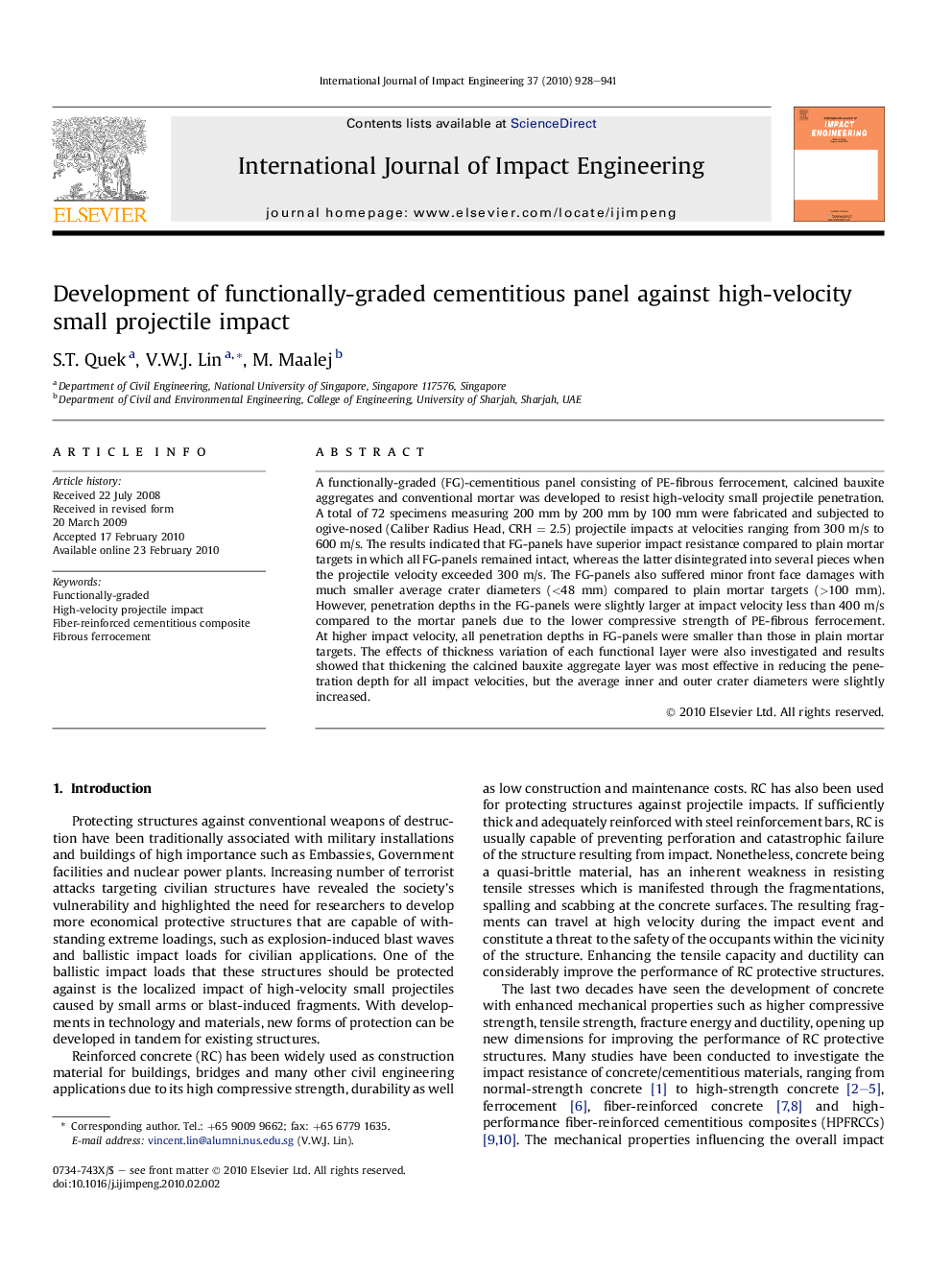| Article ID | Journal | Published Year | Pages | File Type |
|---|---|---|---|---|
| 779564 | International Journal of Impact Engineering | 2010 | 14 Pages |
A functionally-graded (FG)-cementitious panel consisting of PE-fibrous ferrocement, calcined bauxite aggregates and conventional mortar was developed to resist high-velocity small projectile penetration. A total of 72 specimens measuring 200 mm by 200 mm by 100 mm were fabricated and subjected to ogive-nosed (Caliber Radius Head, CRH = 2.5) projectile impacts at velocities ranging from 300 m/s to 600 m/s. The results indicated that FG-panels have superior impact resistance compared to plain mortar targets in which all FG-panels remained intact, whereas the latter disintegrated into several pieces when the projectile velocity exceeded 300 m/s. The FG-panels also suffered minor front face damages with much smaller average crater diameters (<48 mm) compared to plain mortar targets (>100 mm). However, penetration depths in the FG-panels were slightly larger at impact velocity less than 400 m/s compared to the mortar panels due to the lower compressive strength of PE-fibrous ferrocement. At higher impact velocity, all penetration depths in FG-panels were smaller than those in plain mortar targets. The effects of thickness variation of each functional layer were also investigated and results showed that thickening the calcined bauxite aggregate layer was most effective in reducing the penetration depth for all impact velocities, but the average inner and outer crater diameters were slightly increased.
